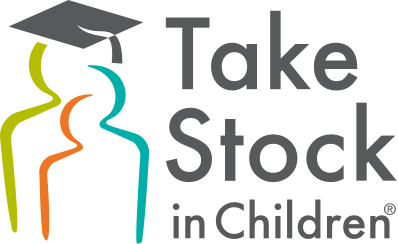Graduation may seem eons away from where you are standing now, but trust us, you will be on the job market before you know it. We recommend you start preparing your professional portfolio items now, while you are still in college.
Don’t wait until graduation to build a resume—these important documents can be used to apply for internships, fellowships, and summer jobs that can help set you apart later down the line.
Your Take Stock College Completion Coaches are sharing the following points of assembling a resume and writing a cover letter.
Resumes
Resumes are an introduction to you and your qualifications. It should show an employer that you have the skills and experience needed for a position, so it should be tailored to the job or internship position. Before you submit your application materials, make sure to update your resume with key terminology from the job description. This shows you have experience and skills in areas that the employer is looking for.
Visit your campus career resource office for industry specific tips for your resume. Some general tips are provided below.
What to include on your resume:
1. Header:
– Your full name
-Professional email address Remember, your email address needs to be professional. Instead of gatorgal@email.com, think of your email address as a name tag. For example: FirstNameLastName@email.com or FirstIntialLastName@email.com
-Phone number with area code
-The city and state where you live
-Optional items: link to your portfolio website or LinkedIn profile*
2. Objective or Summary of Skills (optional): a statement that encompasses your skills, abilities, professional expertise, and what makes you most suitable for the position.
3. Education Section: include the degree you are working towards and your expected graduation date. Do not include your high school.
4. Experience Section: This can include a listing of work experiences, volunteer experiences, leadership positions in organizations, and/or internships.
5. Skills: Show off your hard skills in this section (i.e. software you are efficient in or fluency in a second language). Soft skills (organization, leadership, communication) should be shown through your bullet points in the experience section.
*While you are job or internship searching, be sure to review your social media accounts to see if there’s anything that should not be up there. Employers look you up online, so be careful with what you post and how you present yourself online!
When making individual points on your resume, we recommend the PAR method. PAR is used to make your bullet points as strong as possible, so employers recognize the great experiences you already have and the skills you’ve gained through them.

If you have a draft of your resume, take it to the career resource office on campus to get feedback. You can either stop by for a Drop-in or Walk-In or you can make an appointment.
Sample Resume:

Cover Letters
Cover letters are the unspoken requirement for job applications. Think of them as an opportunity to get your personality across to the employer before you meet them. While your resume shows that you have the skills to do the job, your cover letter lets them get to know who you are better. Below you will find the format of a cover letter that guides you through each paragraph.
<Header from your resume goes here>
Date
Recruiter’s Name
Title
1234 Lollipop Way
Candy, FL 12345
Dear Ms./Mr./Search Committee/Etc.,
This first paragraph should include an introduction to why you are writing, the position you are applying for, and how you learned about the position. Make sure to express your interest in the position.
The next paragraph should tell the employer why you are interested in the position. Explain how your academics and experience prepared you for the position. Make sure to include examples from your past experiences to show you have the skills for a position. Do not repeat from your resume, but please refer to your resume. You want them to understand the value you’d bring through this paragraph.
An additional paragraph can be included if you would like to go more into depth about what has you interested in the position, organization, or products and services. Use additional research and current news about the company to show that you took the time to get to know the company.
In the final paragraph, express your desire for an interview and include your phone number and email. Be sure to express how you look forward to hearing from them.
Sincerely,
Your Signature
First Name Last Name
Sample Cover Letter:

Now that you have a great start for a cover
letter, have it reviewed by your career resource office. They will be able to
check for grammar errors and read over your letter for an appropriate,
conversational tone.
We know it can be daunting to write your first resume and cover letter, but
this is a rite of passage we all must go through at one time or another. Get
excited! Your first professional job in your desired career is just over the
horizon, you just have to create an enticing resume and cover letter to get
there. Let’s get started!

